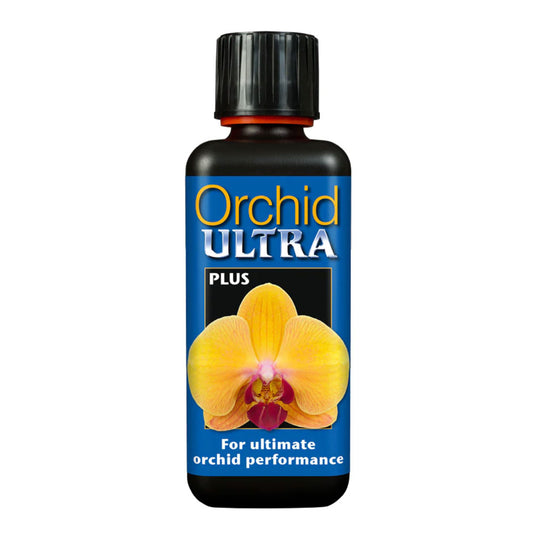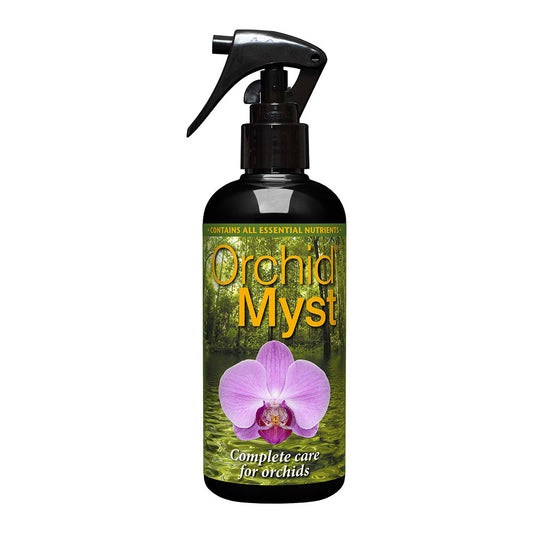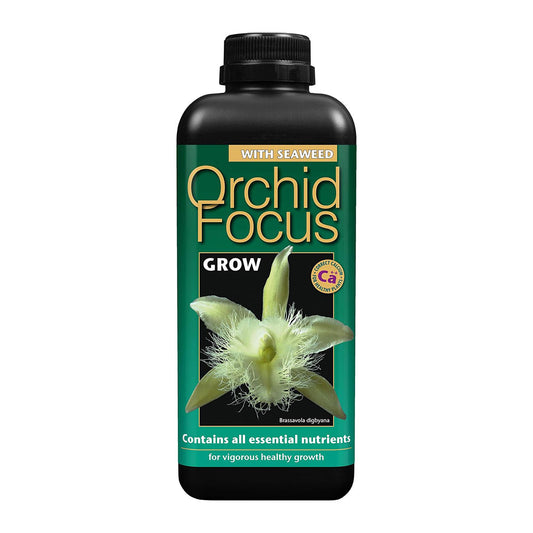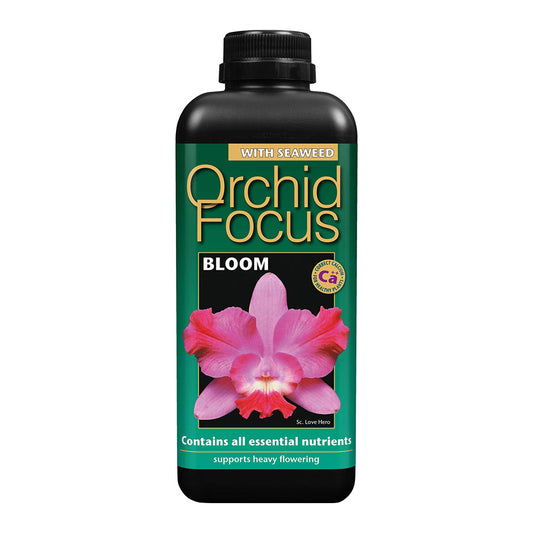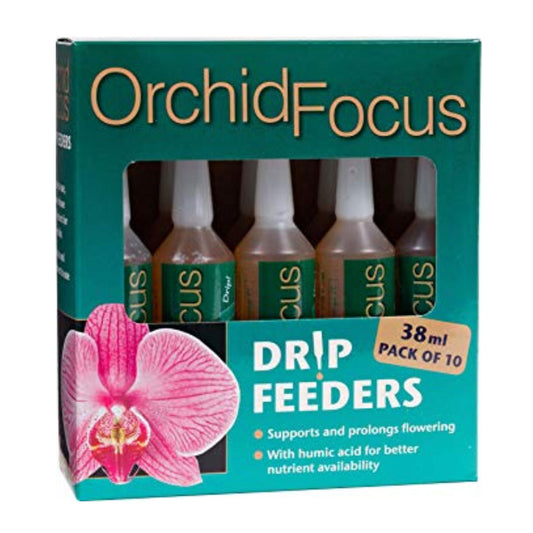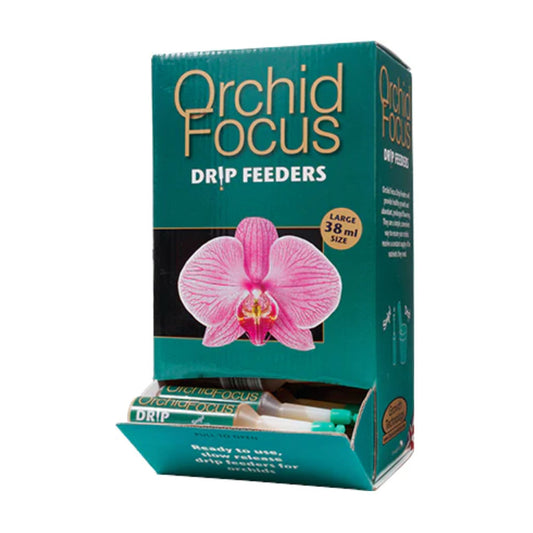Why should we use orchid fertilizer?
Orchids are among the most beautiful houseplants. To keep them healthy, we must be guided by their specific nutritional needs. In nature, orchids grow as epiphytes – plants that attach themselves to other plants or objects.
Growing orchids at home requires special care, as the most common orchid substrates commonly used at home (such as tree bark or moss) do not provide enough nutrients. This means that regularly fertilizing your orchid with the right type of fertilizer is absolutely essential to maintaining its health and flowering.
What role does fertilization play in the health of our orchids?
Fertilization plays an essential role in enjoying healthy orchids. Orchid roots are very different from those of typical houseplants. They are covered with a special layer called velamen, which absorbs moisture and nutrients from the environment. In an artificial environment, they cannot get all the nutrients they need from the air or the substrate alone, even if it is a special substrate for orchids.
Regular feeding of orchids with a fertilizer specially formulated for them promotes the growth of leaves, roots and flower stalks. A well-formulatedorchid fertilizercontains the exact proportions of nitrogen (N), phosphorus (P) and potassium (K), as well as trace elements such as magnesium, calcium and iron.
Each of these elements plays an important role:
- Nitrogen (N):Stimulates the growth of new leaves and stems. Lack of nitrogen can lead to stunted growth and yellowing of leaves.
- Phosphorus (P):It promotes root development and is responsible for stimulating flowering.
- Potassium (K):Improves the overall resistance of orchids, making them stronger and less susceptible to stress and disease.
Fertilization not only promotes the growth and health of orchids, but also contributes to longer and more abundant flowering. Without enough nutrients, orchids may stop blooming or develop weak and small flowers. This is exactly why it is necessary to regularly fertilize your orchids with the right fertilizer.
Common nutrient deficiencies in orchids
Orchids are sensitive to nutrient deficiencies because their substrate does not provide a constant supply of nutrients. The most common deficiencies in orchids are related to a lack of nitrogen, phosphorus or potassium. Each deficiency has specific symptoms that can be observed both on the leaves and on the general condition of the plant.
Nitrogen deficiency in orchids (N):
Nitrogen is a key element for leaf and stem growth. Its deficiency manifests itself in the following symptoms:
- Yellowing Orchid Leaves – Orchid leaves are starting to turn yellow, especially the older leaves at the bottom of the plant.
- The new leaves are smaller and light green.
- The growth of roots and stems slows down.
These symptoms mean that you are either not fertilizing your orchid enough or you are using the wrong orchid fertilizer.
Phosphorus deficiency in orchids (P):
Phosphorus is essential for root development and flowering. A lack of phosphorus leads to the following problems:
- Underdeveloped orchid roots – The orchid has weak or insufficient root system growth.
- The flower stalks are short and have few flowers.
To correct phosphorus deficiency, a fertilizer with a higher phosphorus content should be used, especially for orchids in the flowering phase.
Potassium deficiency in orchids (K):
Potassium improves orchids' resistance to stress and disease, as well as the quality of their flowers. Potassium deficiency can manifest itself in the following ways:
- Spots on Orchid Leaves – Leaves begin to show brown or black spots on the edges.
- Orchid flowers fade or die prematurely.
- The plant is more susceptible to disease.
To prevent potassium deficiency, use a fertilizer with enough potassium during the active growing and flowering season.
Benefits of using specific orchid fertilizer
Many people are tempted to use an all-purpose houseplant fertilizer, but orchids have specific needs. If you want to have healthy orchids, you need to feed them with a fertilizer specifically formulated for them. Using a specialized orchid fertilizer has several key benefits:
Optimal balance of macro- and microelements:Specific orchid fertilizer is formulated to provide the exact ratio of nitrogen, phosphorus and potassium that supports orchid growth, health and flowering.
Better absorption:Orchid root systems are very different and have specific needs. Specialized orchid fertilizer contains easily digestible forms of nutrients that help them absorb them effectively.
Preventing deficiencies:A properly formulated fertilizer prevents nutrient deficiencies in orchids and ensures healthy, sustainable growth throughout the season. There are different types of orchid growth fertilizer, orchid bloom fertilizer, and all-purpose all-season fertilizer. It is important to apply them correctly.
How to read orchid fertilizer product labels
When choosing an orchid fertilizer, pay attention to the macronutrient (NPK) ratio on the label. This will tell you the concentration of nitrogen (N), phosphorus (P), and potassium (K) in the product. For example, a 1-1-1 ratio means that the fertilizer contains equal amounts of each element. Fertilizers with higher nitrogen are suitable for the growth phase, while those with more phosphorus and potassium are suitable for the flowering phase.
Types of fertilizer for orchids
Fertilizer for orchids in the growth phase
Growing orchids need a higher relative nitrogen content to support the development of new leaves and roots. A product such asOrchid Focus Growby Growth Technologyis ideal for this stage. This fertilizer contains balanced macro- and micronutrients that stimulate healthy plant growth without unnecessary additives that could overload the orchid's roots.
Orchid Focus Grow also contains trace elements such as magnesium, iron and calcium, which aid in nutrient absorption and prevent common deficiencies in orchids. Regular application of this fertilizer will ensure that your orchid has strong roots and healthy leaves that will support flowering later.
How to use Orchid Focus Grow
Frequency of application:During the growth phase, apply fertilizer with every second watering.
Dosage:Dilute 5 ml (one teaspoon) in 2 liters of water and water the orchid with this solution. For Cymbidium orchids (one of the most common in our country) the correct proportion is 20 ml per 2 liters of water.
Fertilizer for orchids in the flowering phase
For orchids in bloom, it's time to change the fertilizer. The plant needs more phosphorus and potassium to maintain the strength of the flower stalks and stimulate abundant flowering.Orchid Focus Bloomby Growth Technologyis specially designed for this period and contains the right nutrients for flowering orchids.
The potassium in this product helps the plant cope better with the stress of flowering, making the flowers more resistant and long-lasting. This fertilizer also contains trace elements that improve the overall condition of the plant, so you can enjoy healthy orchids with abundant flowering.
How to use Orchid Focus Bloom
Frequency of application:Every second time you water your orchid, use a solution with Orchid Bloom.
Dosage:5 ml per 2 liters of water for all types of orchids except Cymbidium. For them you should dilute 20 ml per 2 liters of water.
Universal orchid fertilizer for all phases
For those looking for an easier approach to fertilizing orchids, products likeDrip FeedersandPour and Growfrom Growth Technology provide a convenient solution. These fertilizers are designed to provide all the nutrients your orchid needs, eliminating the need to switch products.
Drip Feeders:They provide a slow and even supply of nutrients over a long period of time (up to several weeks), making their use extremely easy. Simply place one ampoule in the orchid's substrate and water your orchid normally.
Pour and Grow:This is a ready-made solution that does not require adding water. You add the required amount (depending on whether you have a large orchid or a small orchid) after watering.
Orchid Myst:This product is best used as a compliment to other orchid fertilizers. It will deliver nutrients and tone your orchid's leaves. It will also repel pests.
Orchid Ultra:This product must be used in combination with one of the other "basic orchid fertilizers". It contains concentrated and purified organic plant extracts, and feeding with it is as close as possible to the "feeding" of the orchid in its natural environment.
Common problems with orchids related to fertilization
Improper application of orchid fertilizer or using fertilizer that is not suitable for orchids can lead to an overfertilized orchid, nutrient imbalance, or underfertilization of the orchid.
Symptoms of overfertilizing an orchid
Overfertilization is a serious problem that can lead to root burn and plant damage. Some of the symptoms of an overfertilized orchid include:
- The leaves become soft and watery, often turning red at the edges.
- The roots turn brown or black and appear "cooked."
- The leaves turn yellow and curl.
What to do:Immediately wash the orchid's substrate with clean water to remove excess fertilizer. This can save the roots and prevent further damage.
Symptoms of nutritional imbalance in orchids
Nutrient imbalance is usually caused by using the wrong orchid fertilizer. Symptoms include:
- Uneven leaf growth (large, deformed or small leaves).
- Poor formation of peduncles, flowers and roots
What to do:Change the fertilizer according to the orchid's growth phase and make sure you use a balanced product.
Symptoms of an under-fertilized orchid
If the orchid is undernourished, it does not receive enough nutrients and shows it with the following signs:
- The leaves are pale green or yellow.
- New leaves and roots grow very slowly.
- The orchid does not form flower stalks or the flowers are few and small.
What to do:Increase the frequency of fertilization and use a fertilizer with the appropriate nutrient ratio for the growth phase of your orchid.
We hope this information was useful to you. You can always write to us via the contact form if you have any questions.
Your favorite growshop,
Gardener


